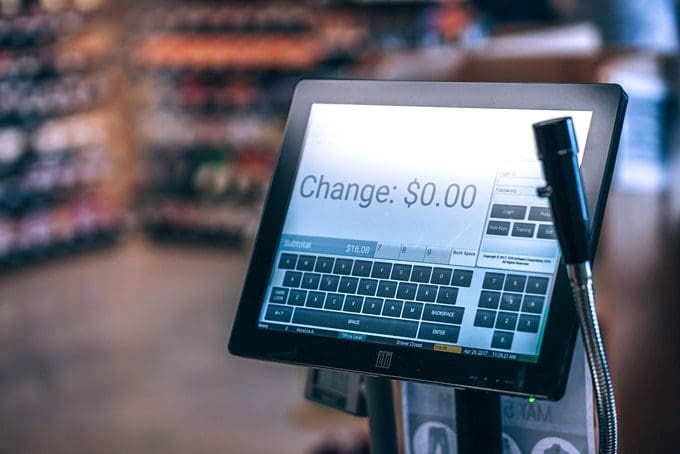words Al Woods

ePOS systems are not a one-size-fits-all product. In fact, there are systems specifically designed for restaurants, retail stores, and other business types. Because ePOS systems can (and should) be customized for each business that uses one, it can be hard to know what exactly you should be looking for before committing to a certain system.
The good news is that there’s a baseline of features and functionality that all quality ePOS systems should have. Keep reading to learn about four features that the ePOS system you choose needs to have.
ePOS Systems 101
If you’re wondering “what is an ePOS?”, we’ve got you covered. A point of sale (POS) system enables your business to process transactions, along with a host of other features. With the right POS system, you have access to a tool that enables you to run an efficient and profitable company.
With an ePOS system, the days of slow cash registers and paper receipts can be part of the past. POS systems are designed to streamline and automate the purchase process, allowing faster transaction times and other perks like inventory management, real-time metrics, and even a database to house important customer data.
4 Must-Have Features
Now that we’ve discussed what an ePOS system is, the next step is to figure out what type of features and functionality you’ll need. An ePOS system is a big investment, so you want to ensure that your business dollars are spent on a product that offers a high return on investment.
With so many ePOS systems out there offering all sorts of bells and whistles, it’s sometimes best to start with the basics. Here are four features that you’ll want when choosing an ePOS system.
- Mobile Transactions
Mobile devices run the world, including how we conduct business. One of the most modern features you’ll want to have in your ePOS system is the ability to process mobile transactions. With mobile transactions, you can take your store anywhere. While it’s standard to complete sales in your store, being able to process customer purchases from any remote location is a huge perk.
Imagine the possibilities! With mobile transaction support, you can process sales at local tradeshows, pop-up shops, and anywhere else. If you really wanted to push the boat out, you could even use the best takeaway epos system to offer delivery services to your customers. As more and more people are preferring the idea of treating themselves to a takeaway, this can help to increase your sales, as well as enhance brand visibility and stay one step ahead of your competitors.
Of course, mobile transactions can also be used at your physical location. Using connected devices in-store, customers can check out from anywhere. This reduces the risk of long lines increases engagement with customers, and is a huge convenience
2 .Inventory Management
Another must-have feature that you’ll want your ePOS system to offer is inventory management. There’s nothing more tedious and error-prone than manual inventorying. Spending hours counting inventory and figuring out which items are low on a stock is antiquated. With an ePOS system, your entire inventory management process can be automated from beginning to end.
Some of the top perks of automated inventory management include:
- Alerts when a product is low on stock
- Automatic reordering of items
- Real-time inventory numbers
With streamlined inventory management, you can ensure that you’re never out of your top selling items. it also allows you to see which items are selling the fastest and which ones aren’t moving off the shelf. These numbers and metrics allow you to make smarter and more informed decisions when it’s time to re-up on stock.
3. Employee Data
Paper timesheets and manual clock punching aren’t ideal in today’s fast-paced business world. Using an ePOS system, you can conduct all sorts of employee reporting. Not only can you use the system to track employee sales numbers and productivity, but it can also be used to identify when and how long employees are working.
This data is extremely beneficial when it’s time to give feedback to your staff. Metrics can also be used to identify top performers and even for creating employee work schedules.

4. Customer Database
While it’s important to track employee data, it’s even more critical to keep close tabs on your customers. A successful business is one that understands exactly what its customers want. Using an ePOS system, you can track a wealth of consumer data including:
- Purchase history
- Frequency of purchases
- Top purchased items
This database can also be used to track personal customer information such as name, birth date, and email. This information can then be used for merchandising and marketing.
Having quick access to purchase history also allows customers to return items without a receipt since orders can be retrieved in the system by customer name. This is a huge convenience for shoppers.
Conclusion
Modern ePOS systems offer all sorts of features and functionality. Start with the basics by ensuring that the system you choose offers these four features, at a minimum! This way you have a system that automates and streamlines some of the most important business processes.




